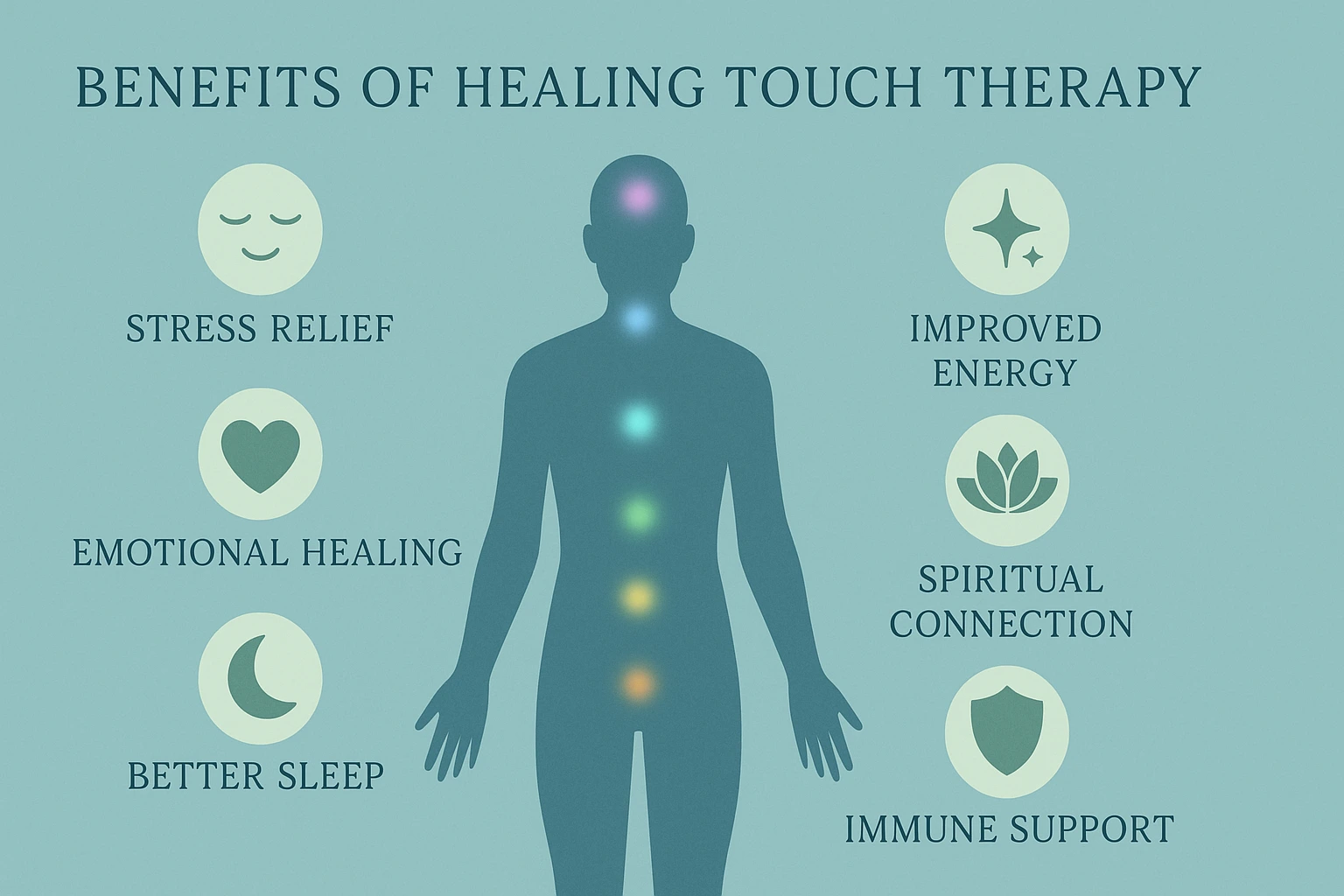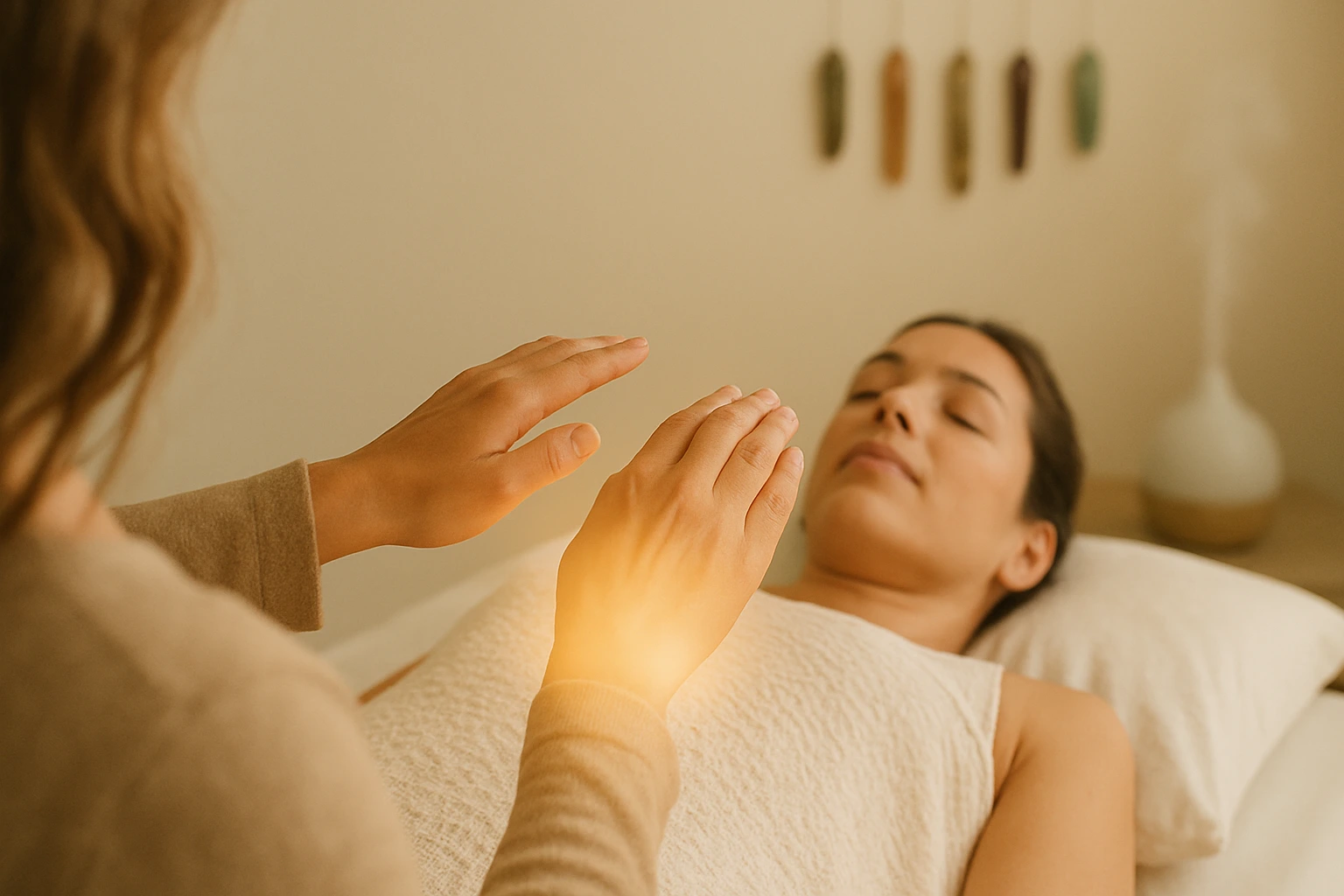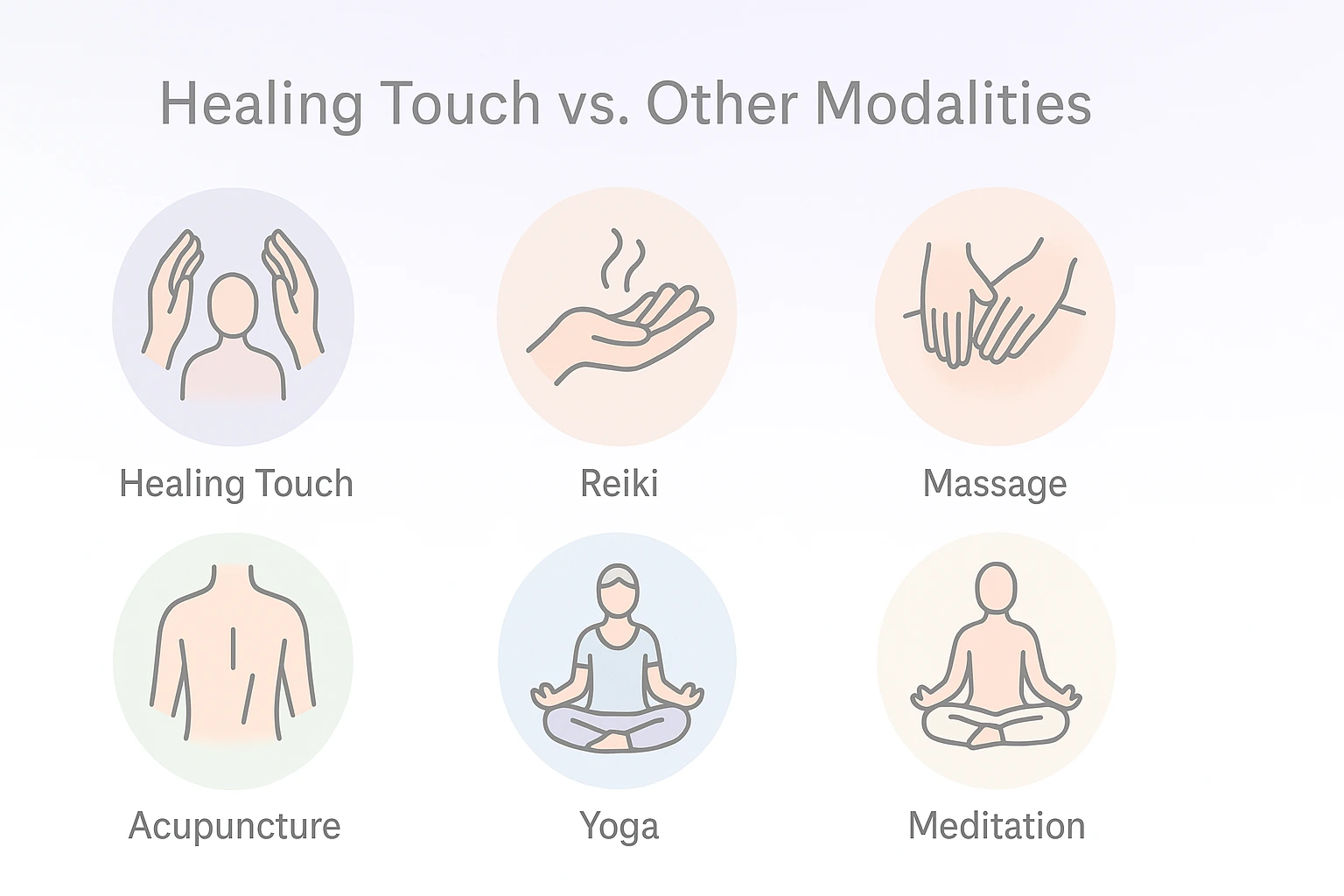
Ever feel totally drained after a chaotic day? Now imagine all that tension melting away with healing touch therapy. I tried this gentle practice, and it was like a heavy cloud lifted off me. This therapy soothes stress, mends emotional scars, and sparks a deeper connection to your inner self. It’s safe, respectful, and feels like quiet empowerment. Curious to explore this therapy? Dive into holistic wellness with our guide on mindfulness retreats.
Check Your Energy Alignment!What Is Healing Touch Therapy?
At its core, healing touch therapy is like hitting the refresh button on your energy. No sci-fi gadgets—just a gentle practice to rebalance your inner vibe, or what some call your “aura.” When life’s stresses leave you out of sorts, this therapy clears the fog and restores calm. My friend Lisa says it tamed her anxiety, and I totally get why!
It’s like wrapping your soul in a warm, cozy blanket of calm.
Here’s why healing touch therapy stands out:
- Energy Flow: Practitioners use their hands to tune into and balance your energy—no tools needed.
- Light Touch: Unlike massage, there’s no deep kneading, just subtle energy work.
- Holistic Healing: It nurtures mind, body, and spirit together.
- For Everyone: Gentle enough for kids to adults.
Curious about energy healing? Visit the National Center for Complementary and Integrative Health for insights.
This post has affiliate links. We may earn a commission. Learn more.
How Healing Touch Therapy Has Changed
Let’s be honest: healing touch therapy once had a questionable reputation, tied to dubious practices. Today, it’s transformed. Healing touch therapy is now rooted in safety and ethics, empowering people like Sarah, who found peace after tough times. Her sessions shifted her perspective, showcasing the modern promise of this practice.

Benefits of Healing Touch Therapy
Relaxation is just the start—healing touch therapy is your wellness toolkit. It’s been deeply supportive for me during stressful weeks, and it may benefit you too. Here’s what it offers:
- Stress Melter: Soothes nerves, like a warm bath after a long day.
- Pain Support: May help ease aches, like that knot in your shoulders.
- Emotional Anchor: Provides a safe space to release heavy emotions.
- Immune Support: May help reduce stress hormones to support resilience.
- Spiritual Glow: Sharpens intuition, like a whisper from your soul.
- Sleep Helper: Promotes easier rest, often after one session.
- Energy Surge: Clears mental fog, boosting focus.
| Benefit | How It Helps |
|---|---|
| Stress Relief | Calms your mind and body |
| Pain Support | May help ease physical tension |
| Emotional Healing | Supports processing tough feelings |
| Immune Support | May help reduce stress for better health |
| Spiritual Connection | Deepens your inner clarity |
| Better Sleep | Promotes restful nights |
| More Energy | Lifts your mood and focus |
Finding a Trusted Practitioner
Choosing a practitioner for healing touch therapy is like picking a trusted friend—you need someone who gets you. It’s about comfort, not just skills. My cousin found migraine relief through this therapy with the right practitioner. Here’s how to find yours:
- Proper Training: Seek certifications from programs like the Healing Touch Program.
- Experience Matters: Ask about their years of practice.
- Clear Boundaries: They must prioritize your safety and comfort.
- Trauma Awareness: Choose someone trained for trauma-sensitive care if needed.
- Good Energy: Trust your gut—if it’s off, keep looking.
Check out what makes a great wellness guide for more tips.
Questions to Ask
Don’t hesitate to ask questions before starting healing touch therapy. I did this for my first session, and it eased my nerves:
- What training or certifications do you have?
- How long have you practiced energy work?
- What’s your approach to healing touch therapy?
- Do you support trauma survivors?
- What’s the cost and cancellation policy?

Keeping It Ethical
Trust is central to healing touch therapy. My first session felt safe because my well-being was the focus. Ethical principles ensure you feel secure:
- Professional Boundaries: As respectful as a doctor’s visit.
- Clear Communication: Every step is explained.
- Your Comfort Rules: You set the pace, and boundaries are honored.
- Trauma-Safe: Practitioners create gentle spaces for survivors.
- Shared Goals: You and your practitioner align on your needs.
This practice puts you in control of your healing path.
I set a small intention before sessions, like “I want to feel lighter.” It aligns my goals with this therapy.
What Happens in a Session
Every session of this therapy is unique but always calming. I was nervous for my first, but it was pure relaxation. Here’s what happens:
- Quick Chat: Share your health, goals, or concerns.
- Get Comfy: Lie down, fully clothed, and relax.
- Energy Check: The practitioner senses your energy, like tuning a radio.
- Balancing Act: Light touch or hovering hands clear energy blocks.
- Peaceful Pause: Soak in the calm, like a soul retreat.
- Wrap-Up: Discuss insights and how it felt.
Making It Part of Your Life
Healing touch therapy can be a gentle boost for self-care. I pair it with short meditations after work, and it’s a game-changer. Want more ideas? Try data-backed self-love practices. Here’s how to make it a habit:
- Regular Sessions: Book monthly to maintain balance.
- Daily Rituals: Add simple yoga or meditation.
- Body Awareness: Scan how you feel daily.
- Nature Boost: Walk outdoors to recharge.
- Healthy Fuel: Nourish your body for energy flow.

Healing Touch vs. Other Practices
Think of healing touch therapy as one option in a wellness menu. Each practice has its vibe—here’s how they compare:
| Practice | What It Does |
|---|---|
| Healing Touch Therapy | Balances energy with gentle, non-invasive techniques. |
| Reiki | Channels life force energy, rooted in Japanese tradition. |
| Massage | Works physical tension with hands-on kneading. |
| Acupuncture | Uses needles to direct energy flow, based on Chinese medicine. |
| Yoga | Combines poses and breathwork for mind-body balance. |
| Meditation | Calms the mind through focused stillness. |
Not sure which to try? A practitioner can guide you, or explore breathwork for emotional release to complement healing touch therapy.
Healing for Trauma Survivors
For those who’ve faced tough times, healing touch therapy offers a gentle haven. It’s non-invasive and designed to feel safe, easing you into healing at your pace. Imagine finding comfort in a session tailored for you. Here’s how to approach it:
- Trauma-Trained Practitioner: Seek someone skilled in trauma-sensitive care.
- Open Communication: Share what makes you feel secure.
- Set Boundaries: Request adjustments if needed.
- Go Slow: Take breaks if emotions feel intense.
Energy Alignment Check-In
Wondering how your energy’s doing? This quick tool gives a snapshot of your inner vibe with healing touch therapy insights. Answer three simple questions to get personalized suggestions tailored just for you!
Energy Alignment Check-In
Answer these questions to check your energy alignment.
I feel grounded and present in my body.
I have clear boundaries with others.
I feel connected to my intuition.
Your Energy Alignment Results
PendingFrequently Asked Questions
The Future of Healing Touch
Healing touch therapy is on an exciting path, becoming a go-to for holistic wellness with ethical, inclusive practices. It’s like gently supporting your body’s natural balance. Ready for more? Discover breathwork for emotional release to complement your journey.
